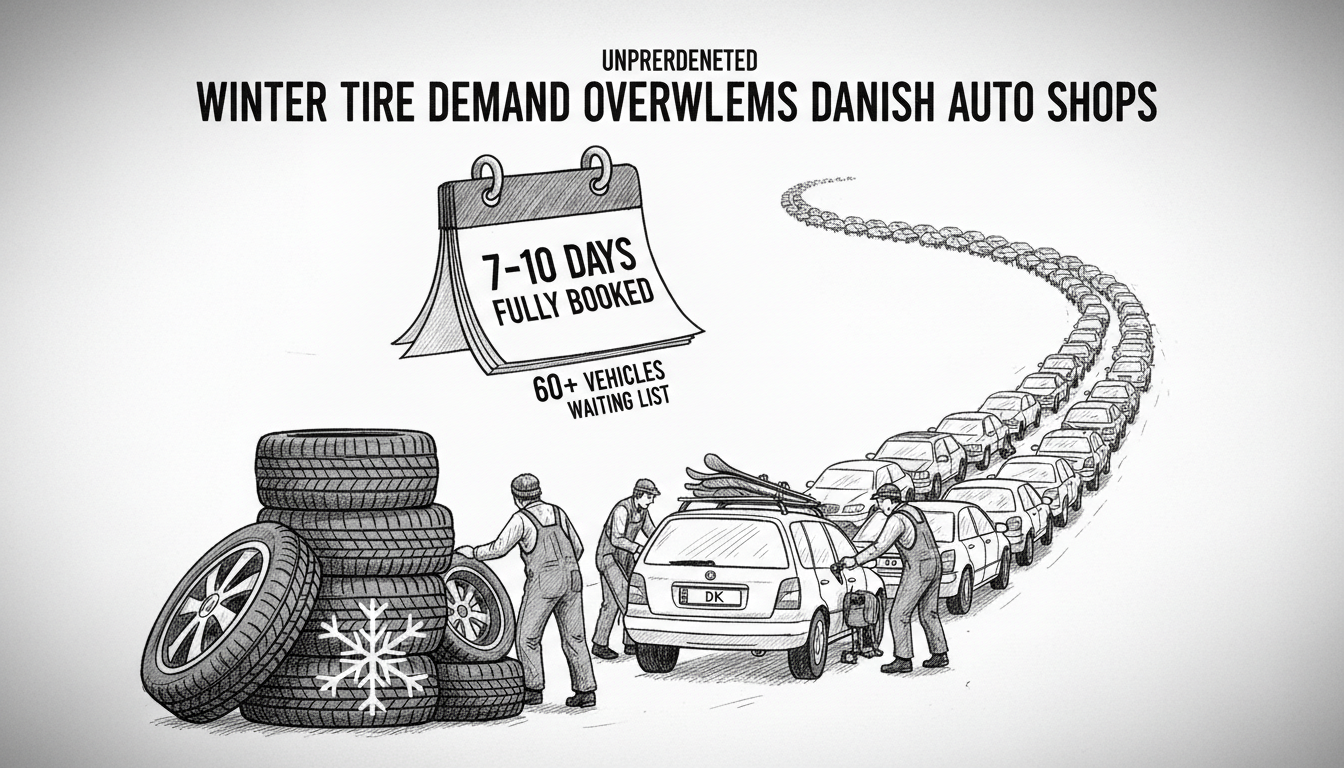Danish auto centers face overwhelming demand for winter tires as seasonal changes trigger nationwide vehicle preparations. At Esbjerg Auto Center, owner Søren Hansen reports unprecedented customer volumes he has not witnessed in over two decades. The workshop currently maintains a waiting list of sixty vehicles despite dedicating half its workforce exclusively to tire changes. This surge reflects broader patterns across Danish municipalities as citizens respond to weather shifts and regulatory requirements.
New legislation mandating specific tire types during winter conditions has accelerated public response. The regulations prohibit summer tires when roads contain snow, frost, or ice. Hansen observes most customers already understand these requirements before contacting his shop. The telephone remains constantly busy with concerned drivers seeking appointments. This regulatory framework represents Denmark's practical approach to public safety through clear seasonal directives.
Despite winter tires being the obvious cold-weather choice, all-season variants actually dominate sales. Hansen notes particular interest in all-season tires from electric vehicle owners. This preference reflects practical considerations for Denmark's growing EV market and its unique maintenance needs. The current demand peak should gradually ease within seven to ten days according to industry projections.
Similar situations unfold at other Danish auto centers like Kolding's AutoClaus, where owner Claus Sonnichsen confirms tire change operations began back in October. This extended preparation period demonstrates how Danish businesses anticipate seasonal transitions within the welfare state's structured systems. The coordinated response highlights efficient adaptation mechanisms within Danish society.
These developments carry implications for Denmark immigration policy as newcomers learn local requirements. Understanding seasonal preparations forms part of successful Copenhagen integration into Danish living patterns. The current tire situation reveals how Danish welfare system expectations translate into practical citizen actions. Such collective responses demonstrate social cohesion around shared safety priorities.
What broader lessons emerge from this seasonal phenomenon? The response shows Danish society's capacity for organized adaptation to environmental changes. This reflects the pragmatic social contract underlying Denmark social policy implementations. The system functions because citizens and businesses fulfill their roles within established frameworks.
The current demand surge will naturally subside within the coming week. Then auto shops can resume standard mechanical services beyond emergency tire changes. This temporary disruption reveals the underlying strength of Danish communal responsibility and regulatory compliance.

